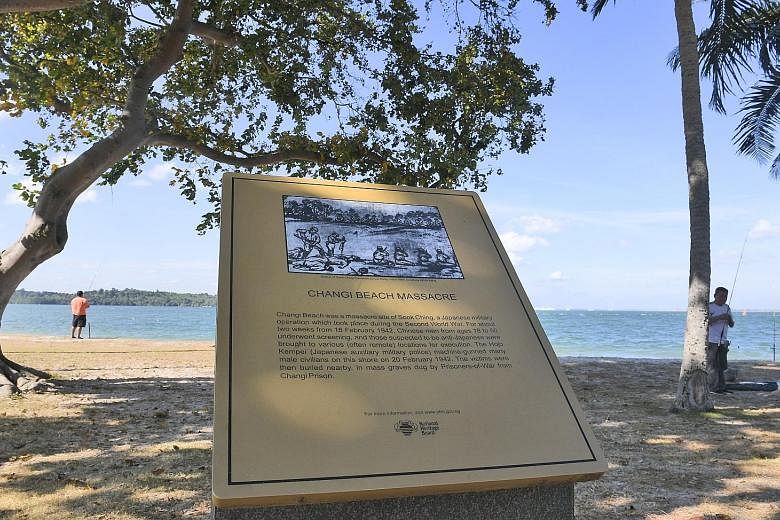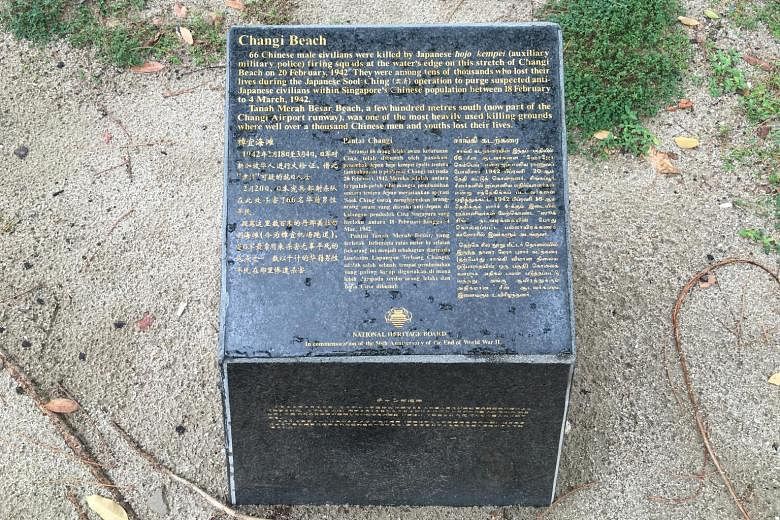The design of World War II historic markers will be updated to include Singapore's four official languages, as well as Japanese, the National Heritage Board (NHB) said on Friday.
This comes after former foreign minister George Yeo, at an Institute of Policy Studies conference last month, highlighted how a Sook Ching monument at Changi Beach that previously bore these five languages has been replaced by a plaque that is only in English.
"This is deliberately reducing our cultural genome... It is denying us of a powerful capability, a precious inheritance from the past which in fact will secure our future," he had said, calling for linguistic diversity to be preserved at such public monuments and signs.
Including Japanese was crucial as it is also important for the Japanese to know this history, he added.
In a Facebook post on Friday, the NHB thanked Mr Yeo for his feedback on the marker at Changi Beach, which was first erected in 1992 to mark the massacre of 66 Chinese male civilians at the beach by Japanese firing squads in February 1942.
"World War II is an important part of Singapore's history. Given its special significance, we agree with Mr Yeo that having these historic site markers in four official languages and Japanese will enable Singaporeans and visitors to better reflect on how our wartime history has shaped Singapore and its people," said the NHB.
The board added that it will explore ways, including using technology, to make more information on its historic sites available to visitors. It aims to strike a balance between presenting meaningful content to the reader and practical considerations such as readability.
Minister for Culture, Community and Youth Grace Fu said in a Facebook post on Friday that she is glad that the NHB has reviewed Mr Yeo's feedback, and will be updating its World War II historic site markers.
"This will enable more Singaporeans and overseas visitors to gain a better understanding of our wartime past, as well as the lessons to be learnt from this poignant chapter in our history," she wrote.
A check by The Sunday Times of 36 signs at memorials, national monuments, tourist attractions and public institutions earlier this month found that about 40 per cent did not have all four official languages.
However, some agencies have quietly made moves to reinstate this diversity on their public signboards.
Changi Airport now has all four official languages and Japanese on its signs at Terminal 2 and Terminal 4, which opened in 2017. But most signs at Terminals 1 and 3 still do not include Tamil.
In Chinatown, a brown sign put up by the Singapore Tourism Board (STB) that marked the Chinatown Food Street in Smith Street now bears a Tamil translation, though photos from 2009 show that Tamil was missing then.
Tamil has also been added to the brown signs at Lau Pa Sat Festival Market, and Merlion Park near the Esplanade Bridge, which did not have Tamil in photos taken in 2012.
The STB's brown signs indicate tourist attractions or landmarks.



